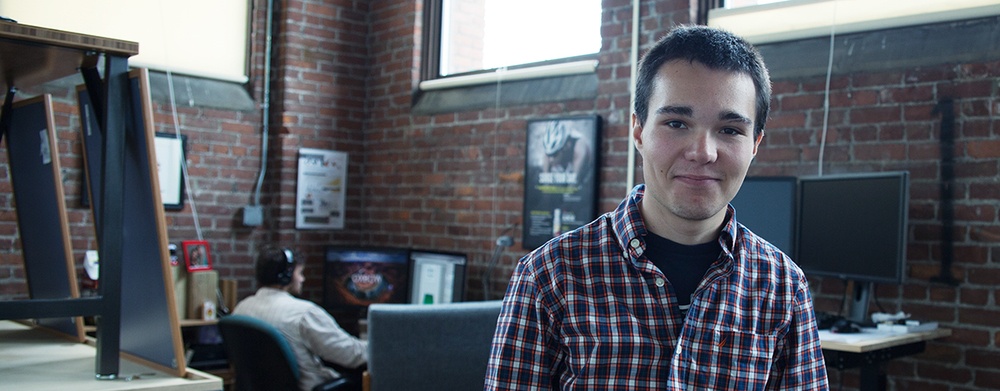
My name is Jack Donovan and I graduated from Champlain College with a degree in Game Programming. I’ve been fascinated with virtual reality and augmented reality since my first Virtual Boy (a 1995 two-tone Nintendo VR console) and I’ve been growing as a programmer ever since. I make non-VR games too; I co-founded an independent game studio incorporated in Vermont called Team Aurora Games and I wrote a book called OUYA Game Development By Example, released by Packt Publishing. My first task at IrisVR was what would evolve to become the bread and butter of our automation process: reading an exported .OBJ file and generating a 3D mesh based on its geometry data. It was a primitive torus shape, something like a donut, and despite its simplicity, seeing it generated on screen properly was exciting. That prototype is a little dated now that our algorithm is able to load in a model of the entire Empire State Building, but I won’t forget that first task as the jumping off point that got me started coding and learning more about virtual reality and procedural mesh generation.
My first architectural demo in VR was, in a word, real. As a game developer, I’m used to being immersed in a game world equipped with some sort of laser gun, a regenerating health bar, and an army of aliens to defeat. Experiencing a real building in virtual reality without all the sci-fi bells and whistles felt like actually being there, especially because one of the first buildings I tried was IrisVR’s very own Burlington office. This is when I understood exactly what IrisVR does; create a link between architects who read in schematics and non-architects who can only experience a building by being there.
During development, I’ve been able to wear many different hats as a programmer. One day, I may be writing networking code to send building data to another machine over wifi, and another day I could be delving into graphics programming to create a shader that would make any generated object look like it came fresh out of Sketchup. I feel incredibly lucky to be able to try so many different kinds of coding, because in the game industry programmers are often hired with a distinct specialization. I don’t have any single favorite specialization, so not having to choose keeps everything fresh and exciting.
As we move forward, I’ll be working on perfecting our native Sketchup model support, as well as rolling in support for other favored architectural programs like Revit and general object formats such as .IFC files. I’m looking forward to working on materiality as well, so that any textures (wooden walls or fuzzy carpet) won’t lose any of their luster when we bring them into virtual reality. I’m excited to keep working every day on making virtual reality even less distinguishable from “real” reality, and I’m not stopping until we have a Holodeck. :)
.png?width=212&name=Prospect%20by%20IrisVR%20Black%20(1).png)
